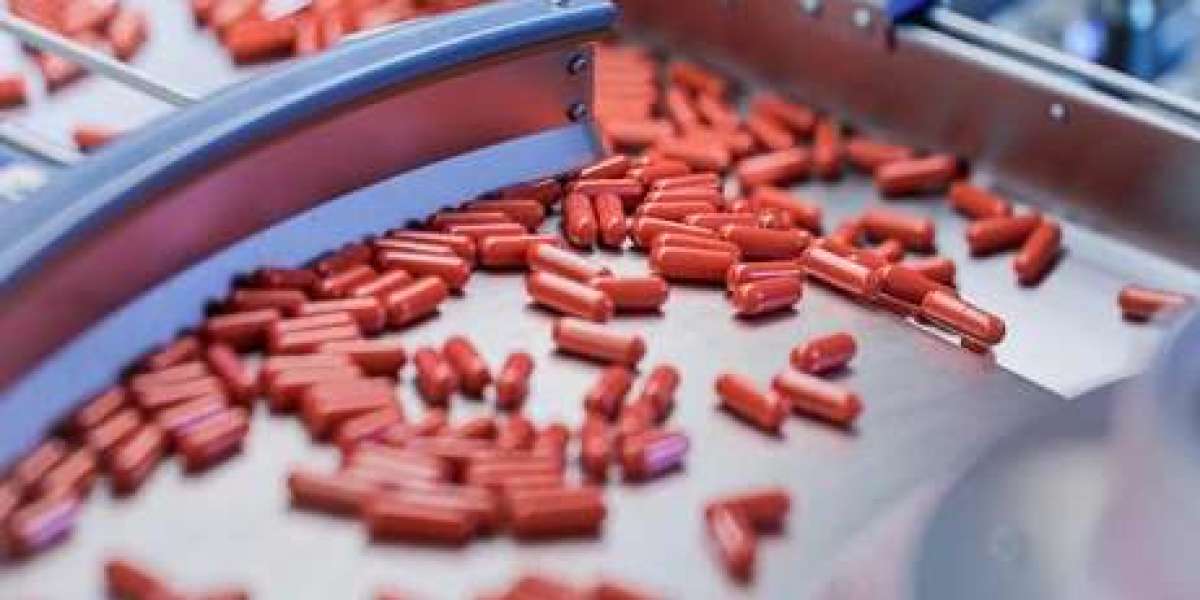Capsules have become a popular dosage form in the pharmaceutical and nutraceutical industries due to their ease of use, versatility, and efficient delivery of active ingredients. Capsule Manufacturing plays a critical role in ensuring that these products meet the highest standards of quality, safety, and efficacy. In this article, we will explore the capsule manufacturing process, the types of capsules, and the benefits of using capsules for pharmaceutical and dietary supplements.
What is Capsule Manufacturing?
Capsule manufacturing refers to the process of producing capsules for pharmaceutical, nutraceutical, and dietary supplement applications. A capsule is a small, rigid container made from gelatin, HPMC (Hydroxypropyl Methylcellulose), or other materials, designed to encase a specific amount of active ingredients, such as drugs or vitamins, for oral consumption. Capsules are a popular choice for their ability to deliver precise doses of active ingredients while providing an easy-to-swallow option for consumers.
There are two main types of capsules commonly produced in the manufacturing process: hard capsules and soft capsules. Each type serves different purposes and is made using specific techniques that ensure the correct formulation of the product.
The Capsule Manufacturing Process
The capsule manufacturing process involves several stages, each designed to create a high-quality, effective, and consistent product. Here are the key steps involved in capsule manufacturing:
Raw Material Preparation
The first step in capsule manufacturing is the preparation of raw materials. For hard capsules, the primary ingredients typically include gelatin (or a vegetarian alternative such as HPMC), along with plasticizers, colorants, and preservatives. These ingredients are carefully mixed to form the capsule shell.
For soft capsules, the formulation includes a mixture of gelatin and plasticizers along with the addition of oils, glycerin, and water to create a flexible and easy-to-seal capsule shell.
Capsule Shell Production
Hard Capsule Shells: The manufacturing of hard capsules involves mixing the raw materials into a gel-like substance. This mixture is poured onto stainless steel plates or molds to form thin sheets. The sheets are then dried and cut into small, uniform pieces that will eventually be shaped into capsules. These pieces are then placed in a machine that forms the capsule by filling one part of the shell with the active ingredients, while the other part is closed.
Soft Capsule Shells: Soft capsules are made by heating and mixing gelatin and other ingredients. The mixture is then fed into a machine that extrudes it into a continuous ribbon. The ribbon is then cut into individual pieces, and the two halves of the capsule shell are sealed together.
Filling the Capsules
The next stage involves filling the capsule shells with the active ingredients. For hard capsules, this is typically done using powder or granules, depending on the formulation. The ingredients are filled into the capsule body using automated filling machines, ensuring that each capsule contains the correct amount of active substance.
For soft capsules, liquid or gel-based ingredients are typically used. These can include oils, herbal extracts, or other active compounds. The filling process for soft capsules is more complex, as the liquid must be carefully encapsulated inside the gelatin shell.
Sealing and Drying
After the capsules are filled, they undergo sealing to ensure that the capsule shell remains intact. In the case of hard capsules, the two halves are locked together using a band or pinch seal. Soft capsules are sealed using heat or pressure to fuse the edges together and ensure that the liquid inside remains contained.
Once the capsules are sealed, they are dried in controlled environments to remove any moisture content and to prevent the capsule shells from becoming too soft or sticky. This step is crucial for ensuring that the capsules maintain their shape and stability throughout their shelf life.
Quality Control and Testing
Quality control is an essential part of capsule manufacturing. Every batch of capsules undergoes a series of rigorous tests to ensure that they meet the required standards for size, weight, integrity, and potency. Some of the most common quality tests include:
Weight Variation Test: This test ensures that each capsule contains the correct amount of active ingredients within the specified limits.
Disintegration Test: Capsules must break down at the appropriate rate in the stomach. The disintegration test ensures that the capsules dissolve correctly, releasing the active ingredients at the right time.
Content Uniformity Test: This ensures that the active ingredients are evenly distributed throughout the capsules.
Stability Testing: Capsules are tested under various storage conditions to evaluate how they will perform over time.
Packaging and Labeling
Once the capsules have passed all quality tests, they are packaged and labeled for distribution. The packaging ensures that the capsules remain intact and protected from external contaminants. Depending on the product, the capsules may be packaged in bottles, blister packs, or other forms of packaging that provide adequate protection and compliance with regulatory standards.
Types of Capsules in Manufacturing
There are two main types of capsules produced during the manufacturing process: hard capsules and soft capsules.
Hard Capsules
Hard capsules are made from two halves, typically composed of gelatin or a vegetarian alternative such as HPMC. These capsules are most commonly used for dry ingredients like powders, granules, or beads. They are ideal for products such as pharmaceuticals, nutraceuticals, and dietary supplements.
Advantages: Hard capsules provide precise dosing, are easy to swallow, and allow for controlled-release formulations.
Applications: Pharmaceutical drugs, vitamins, minerals, and herbal supplements.
Soft Capsules
Soft capsules are typically made from a single piece of gelatin and are filled with liquid or semi-solid ingredients such as oils, pastes, or herbal extracts. Soft capsules are commonly used for oil-based products and are suitable for delivering fat-soluble ingredients.
Advantages: Soft capsules can hold liquids or gels, offer enhanced bioavailability, and provide a more convenient way to administer fat-soluble nutrients.
Applications: Omega-3 fatty acids, herbal extracts, vitamins, and oils.
Benefits of Capsule Manufacturing
Capsule manufacturing offers numerous advantages, making capsules a preferred dosage form in many industries:
Precise Dosing: Capsules ensure accurate and consistent dosing of active ingredients, which is critical in pharmaceutical applications.
Easy to Swallow: Capsules are generally easier to swallow than tablets, especially for individuals with difficulty swallowing larger pills.
Better Bioavailability: Capsules, particularly soft capsules, can enhance the bioavailability of certain active ingredients, improving their absorption in the body.
Versatility: Capsules can be filled with a wide range of ingredients, including powders, liquids, and semi-solids, making them suitable for a broad spectrum of products.
Customization: Capsule manufacturing allows for customization in terms of size, color, and release mechanisms, offering flexibility for different types of formulations.
Conclusion
Capsule manufacturing is an essential process for producing high-quality pharmaceutical and nutraceutical products. By understanding the various stages of the process—such as raw material preparation, filling, sealing, and testing—you can appreciate the level of precision and care required to ensure the safety and effectiveness of capsules. Whether for pharmaceuticals, dietary supplements, or vitamins, capsule-based products offer numerous benefits, including accurate dosing, ease of use, and improved bioavailability. By leveraging the advanced techniques in capsule manufacturing, businesses can meet the growing demand for high-quality and reliable dosage forms.


